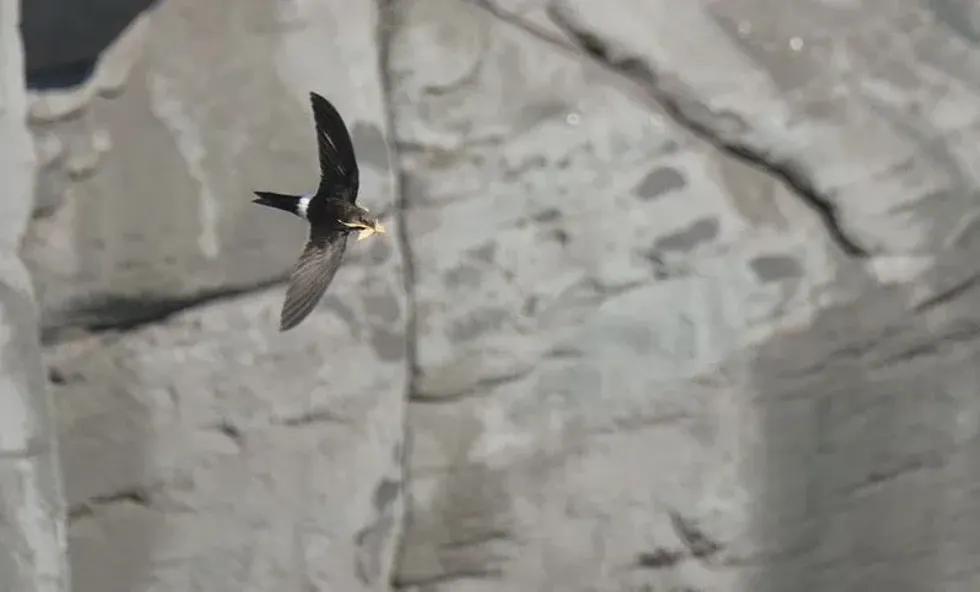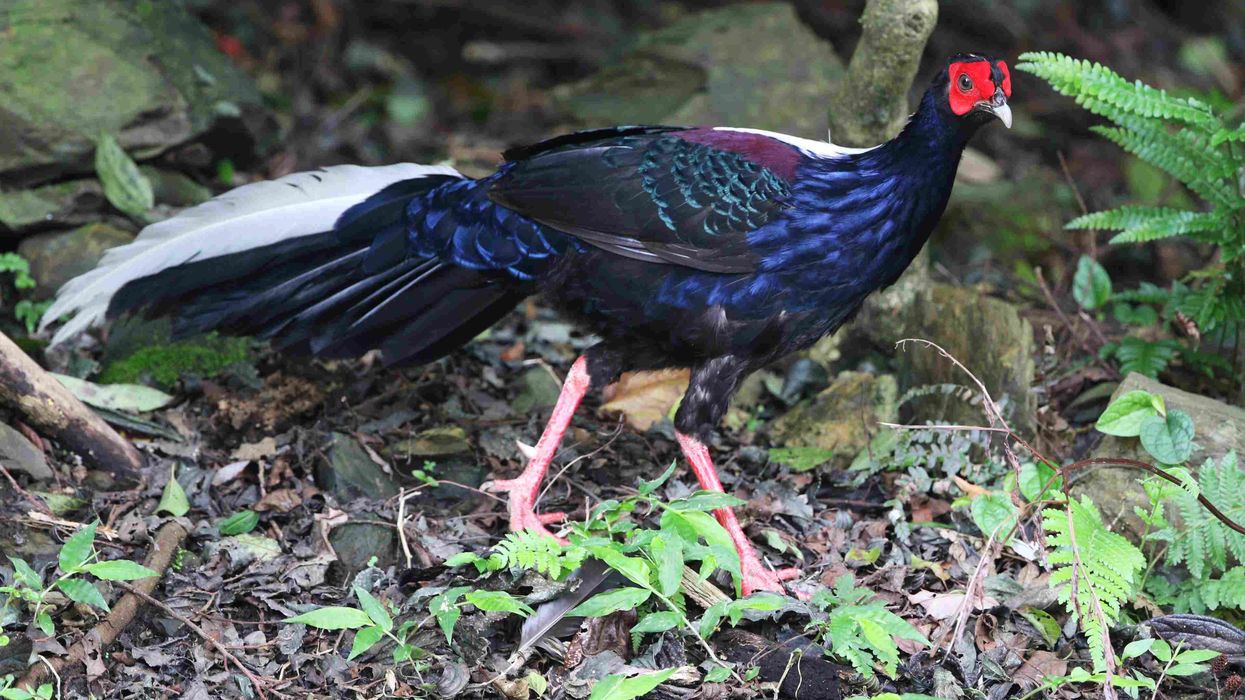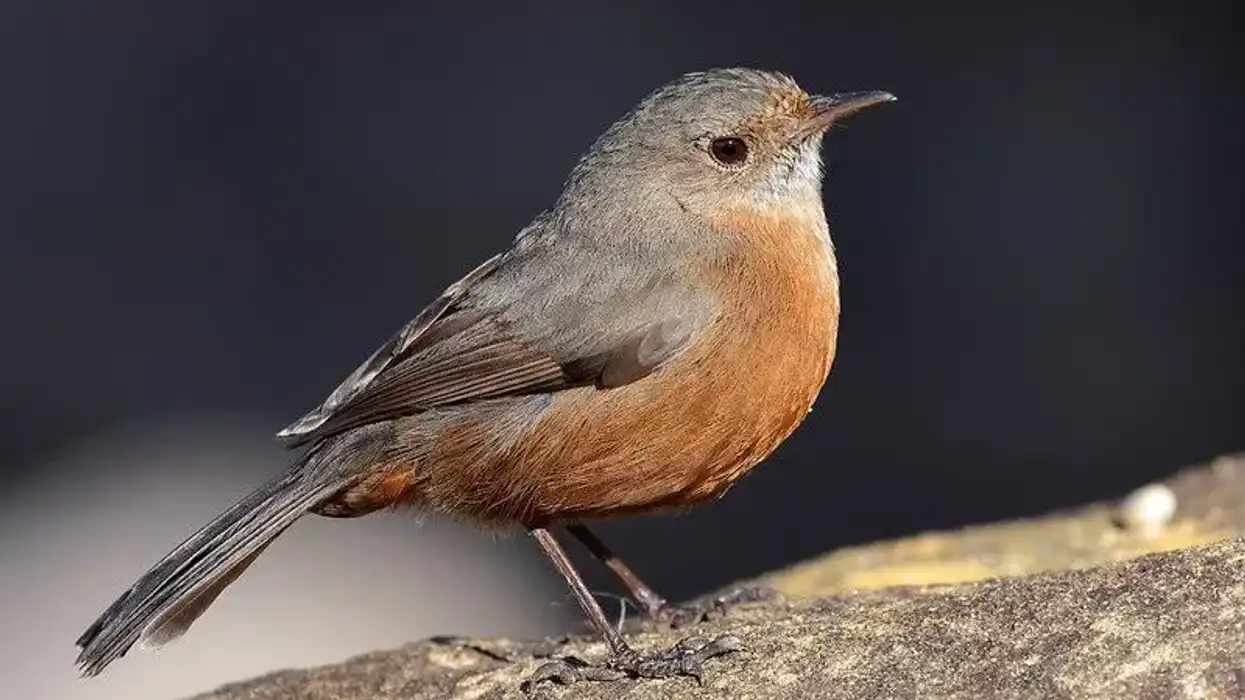The Pacific swift (Apus pacificus) is from the family Apodidae and is found in Australia, South Asia, the Indian subcontinent, and Central and East Asia. It breeds in eastern Asia and the Northern Hemisphere and winters are spent in the southeast part of Asia and Australia.
The habitat that these birds inhabit sheltered caves, rock crevices, and also roofs of the buildings.
The breeding season of these birds differs in the various ranges. In Nepal, it occurs from March to May and from April to July in the Indian Himalayas.
The nest is placed in caves that are sheltered and rock crevices. The nest of these birds is shaped roughly like a cup and is made using feathers and dry grass. These materials are glued using saliva and are then hooked to a vertical surface.
Two to three eggs are laid and the incubation period lasts for about 17-18 days. Fledging takes place in about 40 days.
The body of this fork-tailed swift is known to be spindle-shaped. They have a projecting head, long-pointed wings. The upper parts of the fork-tailed swift are blackish in color but have a contrasting white rump band. The underparts are brownish-blackish.
Males and females of this species look similar and the young ones are known to have paler edges of the wings. The appearance can be similar to one of the related species, that is, common swift. They have short legs and the bill is black in color.
They tend to feed on insects like bees, wasps, flies, and termites. The main call of these birds is a screech. Migration to winter habitat happens in flocks and these swifts are known to sleep in flight and not during the nesting period.
During wintering, they tend to be less vocal. They are placed under the Least Concern category of conservation status. It is very interesting to explore and learn about this bird and if you are interested, read these chimney swift facts and whiskered treeswift facts, too.
Pacific Swift Interesting Facts
What type of animal is a Pacific swift?
The Pacific swift (Apus pacificus) is a type of bird.
What class of animal does a Pacific swift belong to?
It is placed under the class of Aves.
How many Pacific swifts are there in the world?
There is no exact estimation available for the population of this bird.
Where does a Pacific swift live?
The geographic range of this bird consists of Australia, South Asia, the Indian subcontinent, Central and East Asia. Breeding of this species takes place in eastern Asia. The Northern Hemisphere winter is spent in the Southeast part of Asia and Australia.
What is a Pacific swift's habitat?
The habitat of this species consists of sheltered caves, rock crevices, and also roofs of buildings.
Who do Pacific swifts live with?
Pacific swifts can be spotted alone or in pairs.
How long does a Pacific swift live?
Swifts, in general, are known to live for about 20 years.
How do they reproduce?
The breeding season for the Pacific swift (Apus pacificus) takes place from March to May in Nepal and in the Indian Himalayas, it breeds from April to July. The egg-laying season is from June to August in Japan.
The nesting sites of this species consist of covered locations in caves and rock crevices and also building roofs. The nest is shaped like a cup and is made using dry grass, feathers, and other such dry plant materials.
Saliva is used to glue these materials and the nest is hooked to a vertical surface.
Two to three eggs are laid and incubation is done by both the parents for about 17-18 days. The hatchlings are born blind and altricial and the fledging is known to take place in around 40 days.
What is their conservation status?
The Pacific swift (Apus pacificus) is placed under the Least Concern category of conservation status.
Pacific Swift Fun Facts
What do Pacific swifts look like?

The body of this species is known to be spindle-shaped and has long-pointed wings, a projecting head, a wide rump, and a forked tail that is long. This species has blackish upperparts but has a white rump band.
The color on the head is dull. The tail and upper wings are also black in color. The underparts are also black but the underwings are brown in color.
The edges of the wings are whitish. The males and females are known to have similar appearances. The young ones have paler edges of the wings.
The color of the eyes is dark brown and the bill is black and small. The legs are considered to be very short and are also black in color.
How cute are they?
Pacific swifts are not considered cute by everyone, but some people will surely think they are cute.
How do they communicate?
These birds, just like other bird species, tend to communicate using various sounds and calls.
How big is a Pacific swift?
Pacific swifts are around 6.7-7 in (17-18 cm) long.
How fast can a Pacific swift move?
The exact speed of Pacific swifts is not known. The wingspan of these birds is around 15.7-21.6 in (40-55 cm), so it is assumed they can fly quite swiftly!
How much does a Pacific swift weigh?
The females of this species weigh around 1.57 oz (44.5 g), whereas, males weigh around 1.5 oz (42.5 g).
What are the male and female names of the species?
Males and females of this species do not have any sex-specific names.
What would you call a baby Pacific swift?
Baby birds, in general, are known as chicks, young, or juveniles.
What do they eat?
The diet of these swifts is insectivorous and they tend to feed on insects like termites, moths, wasps, bees, and flies. They only feed on flying insects.
Are they dangerous?
These swifts are not considered dangerous.
Would they make a good pet?
Not a lot is known about the Pacific swift as a pet but it is believed that this bird would not make a great pet as it is a wild and migratory animal that migrates during the breeding season.
Did you know...
It might also be referred to as a fork-tailed swift.
The basic appearance and plumage of this bird are quite similar to its close relative, the common swift. The only distinguishing feature being the white rump band.
Just like other members of the family, the main call of this swift is a screech. The call can be explained as a harsh 'spee-eer 'or a trill 'tsiriri'.
It is believed that when the food availability is not enough in the bad weather, the chicks possess the ability to go for days without consuming metabolizing body fat.
John Latham first described swifts as Hirundo pacifica in 1801.
Pacific swifts are considered to have been recorded to be less vocal on the wintering ground with some usual buzzes and twitters.
This swift tends to host some feather mites and some of them include Chauliacia canarisi, Eustathia cultrifera, Chauliacia securigea, and other parasites include sucking mites and bat bugs.
In some places, it is believed that seeing a swift or hearing its call is a signal of changing weather.
This bird might also be spotted in North America.
This swift is known to sleep in flight and not during nesting.
Do swifts ever land?
Swifts do land but rarely.
Does a swift have a forked tail?
Swifts tend to have extremely forked tails and thus, some species because of the tail are also known as fork-tailed swift.
Here at Kidadl, we have carefully created lots of interesting family-friendly animal facts for everyone to discover! For more relatable content, check out these common nighthawk facts and crane facts pages.
You can even occupy yourself at home by coloring in one of our free printable flying bird coloring pages.
Main image by Ozma.
Second image by Ozma.










